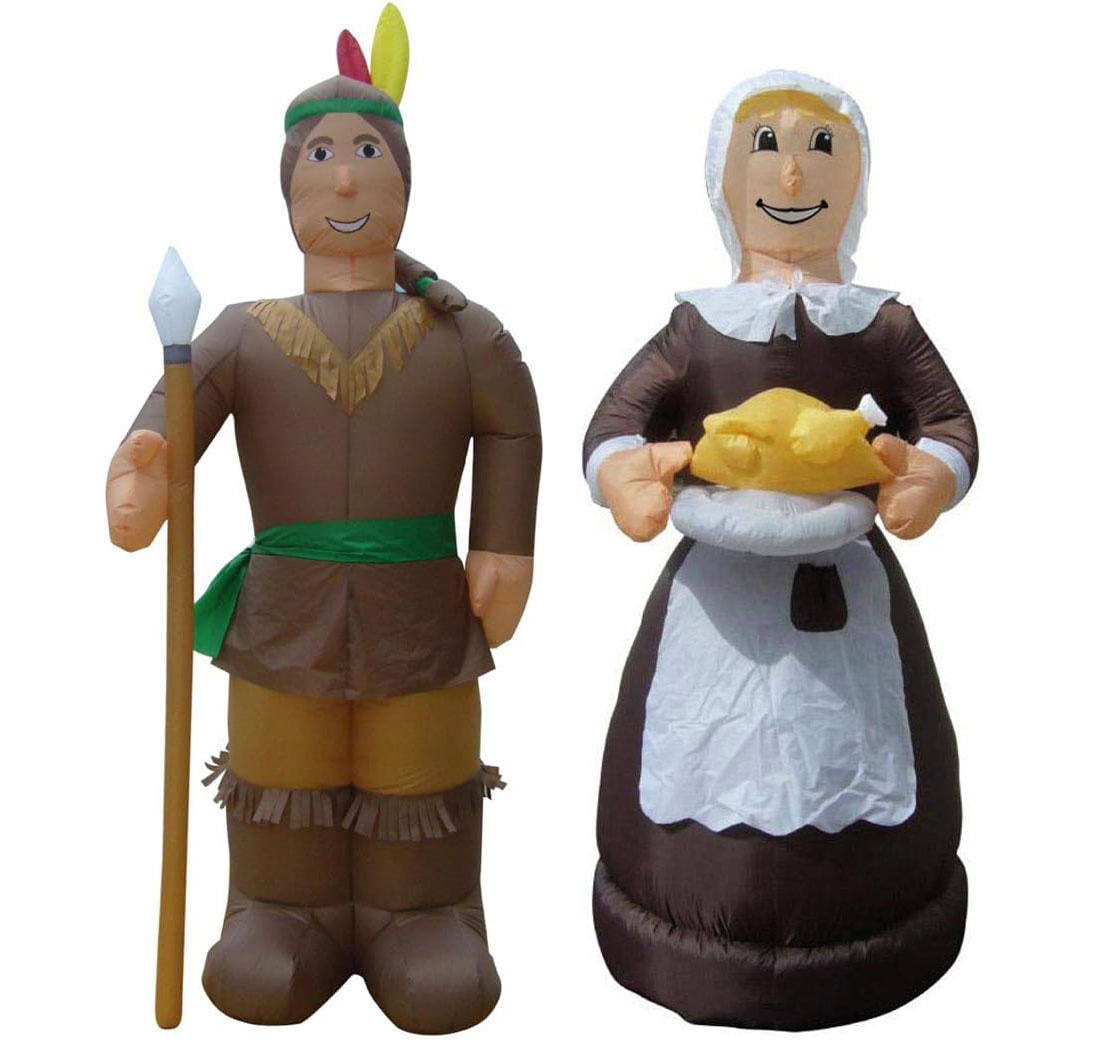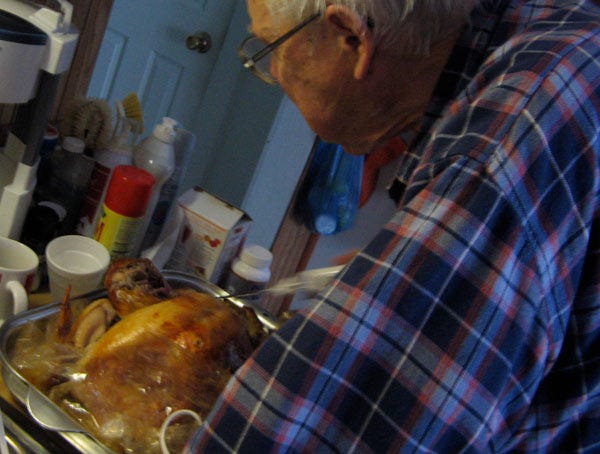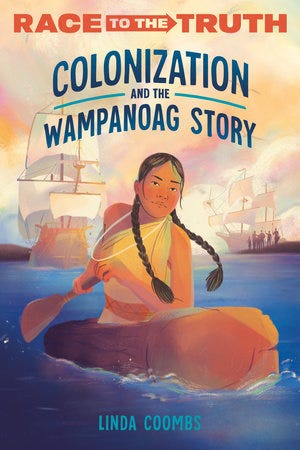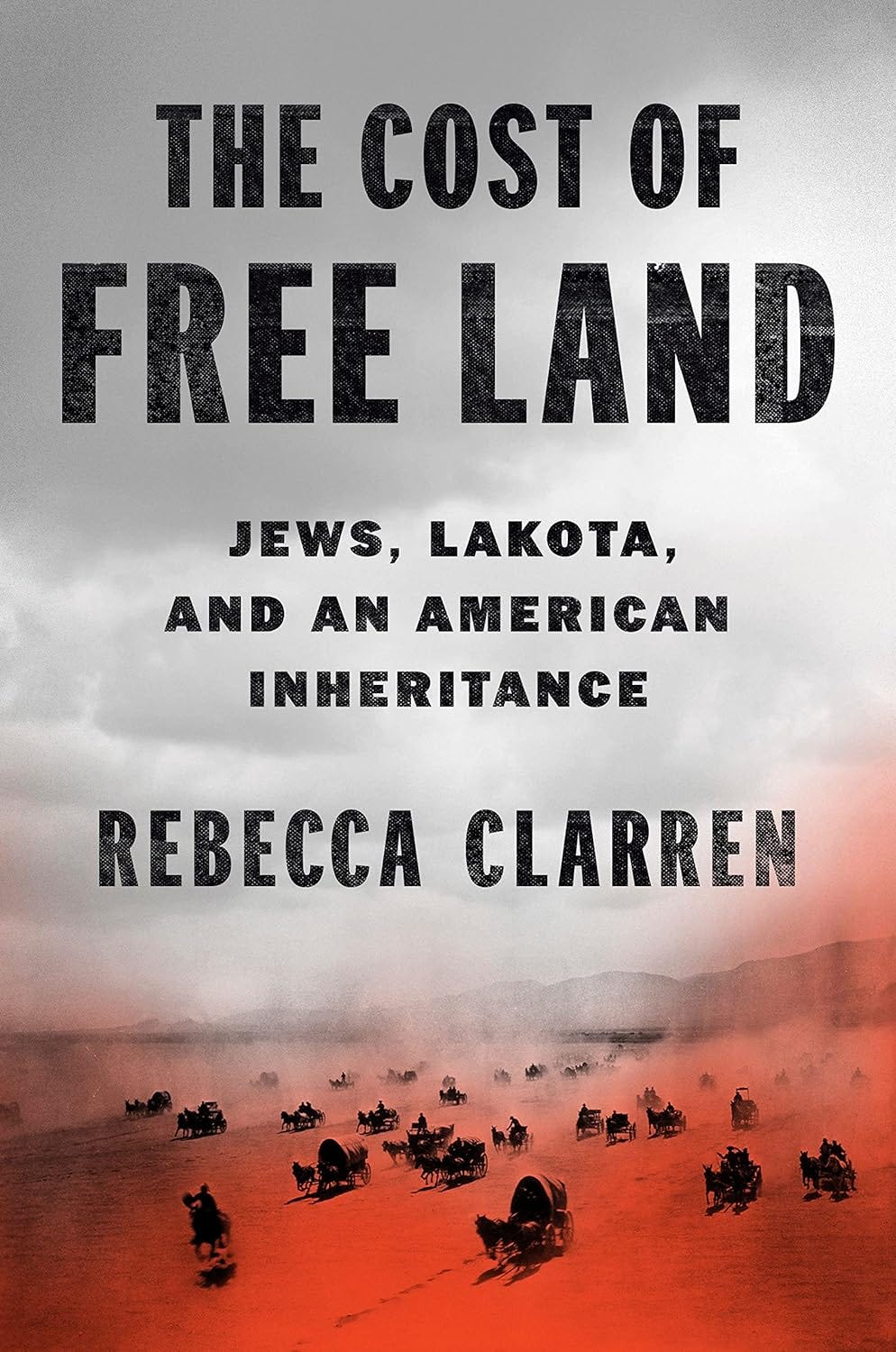Wednesday Walk: Talking Turkey
Offensive Thanksgiving decor, honoring Indigenous voices, and getting published
Welcome to Willoughby Hills!
If you enjoy what you’re reading, please consider a free subscribtion to receive emails every Wednesday and Sunday plus podcast episodes every two weeks. There are also paid options, which unlock even more features.
As is typical every Wednesday, I’m bring you a smattering of topics that I hope will make you a bit more curious about the world around you and give you something to think about later. I call these Wednesday Walks, as it’s the type of conversation we might have walking down a path in the woods. Shall we take a stroll?
Thanksgiving Decor
My kids and I have been noticing that there seems to be an increase in Thanksgiving specific decorations in yards this year. We’ve counted six different inflatable turkeys as we’ve been running errands over the last week or so, and I literally don’t remember seeing any last year.
There is one house not far from us that always has seasonal decorations for every holiday that has had a Thanksgiving display for a few years. I usually pass it at night so I haven’t been able to get a good picture, but here’s a quick composite of how their yard looks.
As far as I can tell, these are two separate inflatables that are not sold as a pair; the homeowner displaying them made the active choice to put them both together. (If you’re interested, here’s the Amazon listing for the Native American and the Pilgrim woman, who is also described as “Amish”).
There is so much wrong with this display, from the tokenized Native American to the notion of him smiling alongside the Pilgrim woman as she serves him a cooked turkey.
But when I drive past this display, I realize that it’s not just this one individual homeowner’s perspective that needs to be changed. It’s an entire system.
There was an artist somewhere that had to design how these inflatable yard ornaments would look. There was a factory that had to turn the artist’s designs into plans for manufacturing. There were people that had to make, connect, and box up the components.
To get these inflatables into the hand of a homeowner, some retail outlet or online store had to decide these were products worth carrying in their inventory. The items had to be shipped somewhere, stocked, and sold. For online sales, somebody had to write a product description, share product images, and fulfill the orders when they arrived.
In other words, these inflatables didn’t just show up in somebody’s yard without an entire chain of complicity, passing through multiple people who had an opportunity to raise their hand and question whether or not this was a good idea. People who either stayed silent, saw nothing wrong, or actually thought these were a good idea.
The good news I suppose is that these inflatables seem to be pretty obscure, with less than 10 reviews each on Amazon. More popular at retailers like Lowe’s are inflatable Thanksgiving decorations like these:
As I said, I don’t remember any decorations last year aside from the one neighbor who has the Native American man and Pilgrim woman. The commercialization and commodification of yet another holiday bothers me, but that’s a topic for another day.
Re-thinking Thanksgiving
Thanksgiving was always both special and strange for me growing up.
As a picky eater, I was not a fan of the food, which was unique to one particular calendar day. We never discussed stuffing or cranberry sauce outside of the last week of November, and turkey was a lunchmeat the rest of the year.
The part of the holiday that I enjoyed was spending time with family and having a day of quiet to rest and reset. For many years after moving to Boston, I would travel back home to Ohio to spend Thanksgiving with my grandparents, appreciating the counterbalance of their slow pace of life against my frantic twenty-something energy.
Now that I’m a parent, there is the struggle of how to talk about the holiday with our young kids. As I discussed during my recent podcast episode with Larissa FastHorse, schools are still often teaching a skewed version of history, where English settlers and Native Americans are friends breaking bread together and sharing in the harvest, much like what my neighbor depicts in his yard with inflatables.
Larissa was a guest this week on the legendary NPR show Fresh Air. I’ve only had time to listen to the first third of the conversation or so, but it’s already an incredible episode.
In listening to Larissa’s Fresh Air interview, one thing that I learned is that the stereotypical depiction of Pilgrims is considered offensive to Native Americans. FastHorse worked with Macy’s to have the Tom Turkey float in the Thanksgiving parade changed from a Pilgrim to wearing a bowtie and top hat.
(Larissa’s The Thanksgiving Play is also now available as a book and an audiobook.)
I loved speaking with Larissa on my show, and loved listening to her on Fresh Air even more. It’s an especially good listen because of both Thanksgiving and Native American Heritage Month.
I also picked up a copy from our library yesterday of Colonization and the Wampanoag Story, a book by Native writer Linda Coombs which tells the story of the early colonization of America, including the first Thanksgiving, from an Indigenous perspective. The librarian was very interested in it, thumbing through it and scanning the back cover before handing it to me.
The book, and several others in the Race to the Truth series, are geared towards children and are meant to counter the white version of history that is often taught in schools. (Race to the Truth is part of Race2Dinner, the group co-founded by
, who was also a guest on my podcast).I’ve written before about how I enjoy the American Girl series of books, and this one has a lot of similarities to those books. The chapters alternate between a vivid narrative story about a young Wampanoag girl and short, historical chapters that describe how history is often taught and ask the reader to critically consider what the real truth might be.
My kids were intrigued by the cover of the book and are eager to start reading it with me. I hope it will give them a different educational foundation than I had growing up.
And one final note on Indigenous stories, I have an amazing new podcast episode this week with
, a journalist and author. Her new book The Cost of Free Land: Jews, Lakota, and an American Inheritance is a fascinating read which examines the history of Lakota land and how her Jewish ancestors came to receive a parcel of that land from the U.S. government as homesteaders.My interview with Rebecca will be released tomorrow, but if you’re interested in upgrading to a paying membership, you can have early access to her interview right now, plus receive early access to every new podcast episode.
I am hopeful that there are voices out there like Larissa FastHorse, Linda Coombs, and Rebecca Clarren who are working hard to change the perception and depiction of Indigenous people. But I am also discouraged to consider how their advocacy can quickly get swallowed by the thousands of people who aren’t able or willing to learn history outside of what was taught in a lower school classroom.
I find that so much of my adult life has been devoted to unlearning what I was taught in school, or supplementing my education with that which was never mentioned.
My First Piece
Finally this week, I wanted to share my first piece of professional writing! Yes, I know that some of you pay for this newsletter (and I sincerely appreciate the support), but this week marks the first time an actual publication has paid me to write something.
has been a longtime reader and supporter of this newsletter and he also edits the amazing Ambrook Research, an online publication dedicated to the issues facing modern agriculture.Jesse reached out after reading my story about watermelon buses here in Willoughby Hills and I spent the last few weeks doing some actual reporting on the topic, most of which involved Googling people that might have a connection to the watermelon industry and cold calling them to see if they’d be willing to chat.
I ended up having some long and fascinating conversations with a farmer in Florida and two different contractors that offer harvesting services in the Southeast.
If you’re interested, you can read my first piece here.
I publish new issues every Wednesday and Sunday. Sign up to always receive the latest issue and support my work:
Other Wednesday Walks
If you’ve missed past issues of this newsletter, they are available to read here.










Great posting for Thanksgiving.